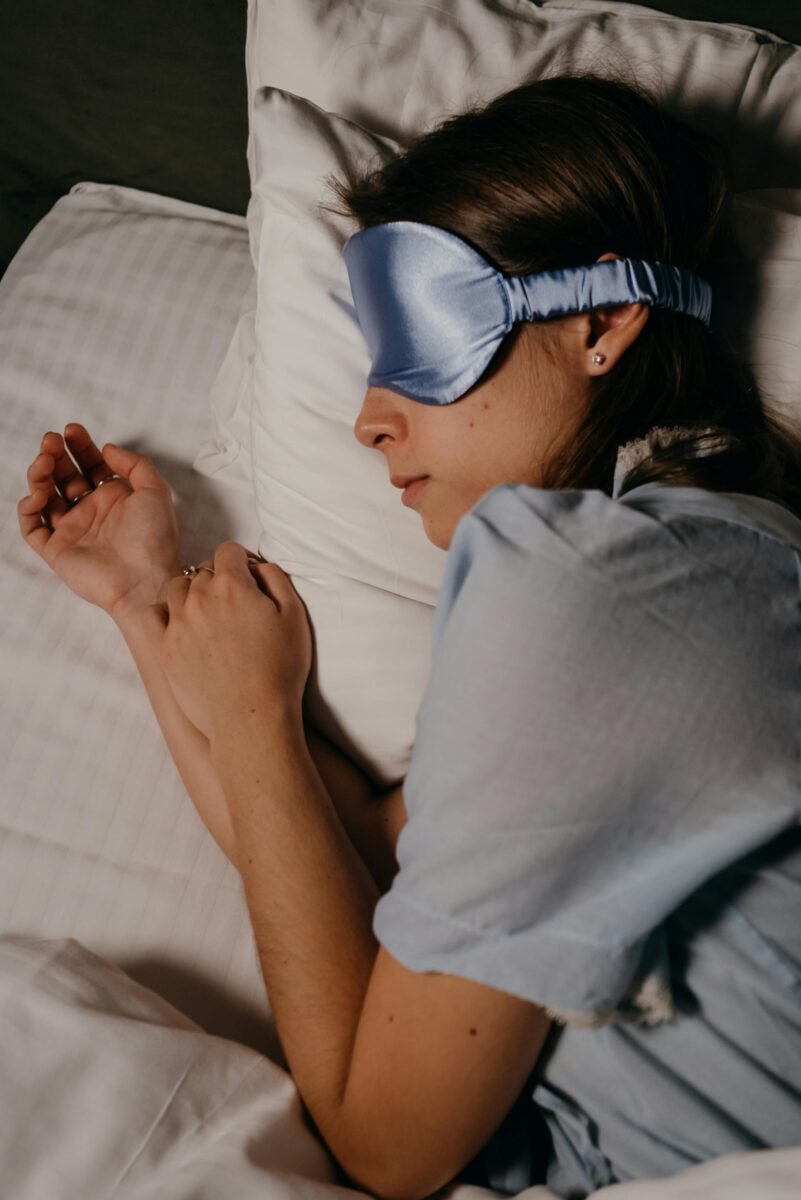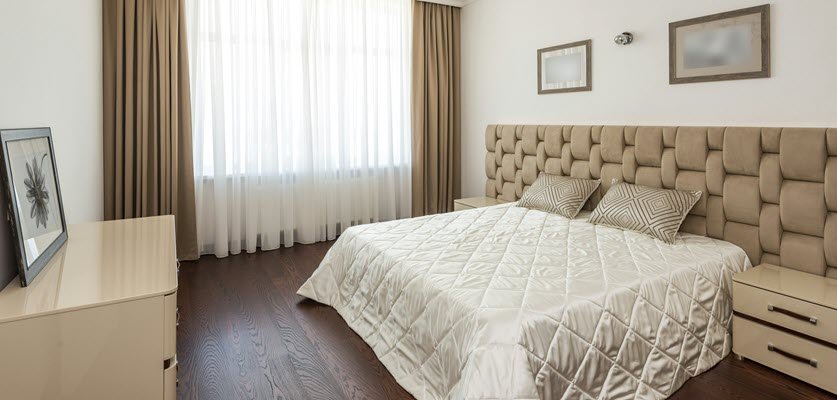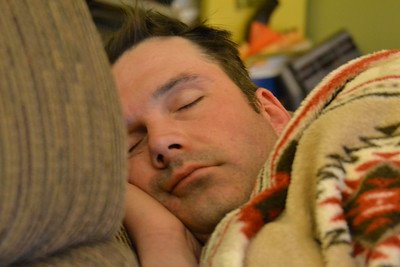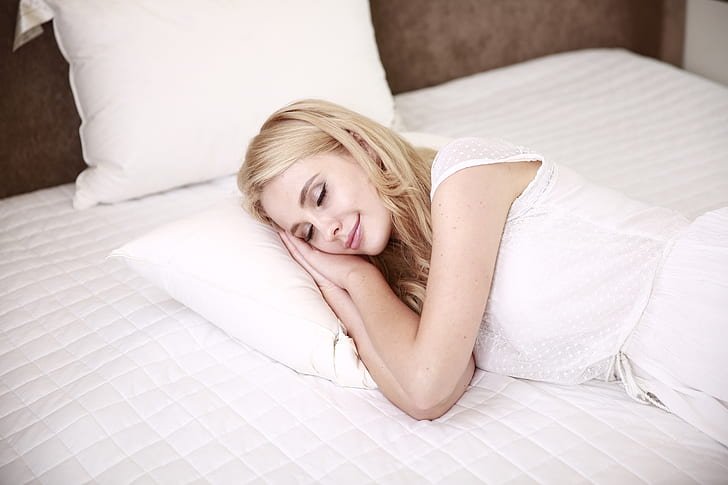How To Fall Asleep Fast –
Your Ultimate Guide to Fast, Quality Sleep
Congratulations – you’re about to master the art of falling asleep quickly. Picture this: U.S. Navy pilots achieved sleep within 120 seconds using one remarkable technique. Their success rate? 96% after just 6 weeks of practice.
Sleep matters more than you think. Right now, 60 million Americans struggle to get proper rest each night. Poor sleep doesn’t just drain your energy – it opens the door to serious health risks. Your heart health, blood sugar levels, weight management and mental wellbeing all depend on quality sleep.
IMPORTANT – Adults need 7-9 hours of proper sleep nightly. Simply lying in bed won’t cut it. You need proven strategies that deliver results.
Ready for better nights? This guide hands you practical, science-backed techniques that actually work. From military-tested methods to smart breathing exercises and room setup secrets – you’ll discover exactly how to fall asleep faster and stay asleep longer.
The Science Behind Falling Asleep Fast
“Sleep is the golden chain that ties health and our bodies together.” — Thomas Dekker, Elizabethan dramatist and writer
Sleep science holds the key to your nightly rest. Let’s uncover exactly how your body and brain work together to help you drift off.
Your Brain’s Sleep Journey
Picture your brain like a sophisticated control room. When bedtime approaches, your body starts its nightly shutdown sequence:
- Your temperature drops
- Heart rate slows down
- Breathing becomes steady
- Brain waves shift gears
Two master controllers guide this process:
- Your body clock (circadian rhythm) – responds to daylight patterns
- Sleep pressure – builds up naturally throughout your day
- IMPORTANT – Your brain produces sleep hormone (melatonin) when darkness falls. Meanwhile, a substance called adenosine builds up, making you feel sleepy the longer you stay awake.
Your brain’s sleep centre (the VLPO) releases special chemicals called GABA and galanin. Think of these as natural sleep switches – they turn off your brain’s “wake up” signals. Your brain waves then shift from active “beta” patterns to slower “alpha” and “theta” waves as you drift off.
Your brain actually reorganises itself during this process. That’s why your thoughts often become dream-like just before sleep takes over.
Your Sleep Hormone Dance
Two crucial hormones control your sleep-wake pattern:
Melatonin (Your Sleep Signal):
- Production starts after sunset
- Peaks between 2-4 am
- Gradually decreases towards morning
WARNING – Blue light from phones and tablets can block melatonin, keeping you awake [11].
Cortisol (Your Wake-Up Call):
- Rises before dawn
- Peaks after waking
- Decreases through the day
When stress keeps cortisol high at night, it fights against melatonin’s sleep-promoting effects. Studies show this can affect both your sleep quality and next-day brain function.
Tackling Night-time Racing Thoughts
Does your mind refuse to “switch off” at bedtime? Racing thoughts create a major roadblock to quick sleep.
Common signs include:
- Mind racing “at full speed”
- Thoughts that won’t slow down
- Worry loops playing on repeat
- Worst-case scenario thinking
While anxiety sufferers often experience this, anyone under stress can face racing thoughts. Research shows these thoughts spike dramatically at bedtime for people with sleep-onset problems.
CRUCIAL FINDING – Racing thoughts predict sleep difficulties more accurately than general worry or stress. This means targeting racing thoughts specifically works better than basic relaxation techniques.
Watch out for these thought-racing triggers:
- Too much caffeine
- Certain medications
- Mood disorders
- Anxiety conditions
- Post-traumatic stress
Remember – Understanding these sleep mechanics helps you work with your body’s natural systems. Master these principles, and you’re halfway to achieving better sleep.
Create Your Perfect Sleep Sanctuary
Congratulations – your bedroom holds the key to quality sleep. Let’s transform your sleeping space into the perfect environment for deep, refreshing rest.
Master Your Bedroom Temperature
CRUCIAL – Keep your bedroom temperature between 15-20°C (60-67°F) for optimal sleep. Your body needs to cool down naturally for sleep, and the right room temperature makes this process effortless.
Too much warmth disrupts your sleep cycle and triggers restlessness. Think of your bedroom as a sleep cave – cool, cosy, and perfectly calibrated for rest.
Top Temperature Tips:
- Set your thermostat to 18-20°C before bedtime
- Choose cotton or linen bedding that lets your skin breathe
- Position a fan for air movement and gentle background noise
- Hot sleeper? Invest in cooling pillows or breathable mattress technology]
WARNING – Overheated rooms disturb your most valuable sleep phase – REM sleep. Open a window if your room feels stuffy – fresh air works wonders for sleep quality.
Control Your Light Exposure
Light powerfully affects your body clock. Even dim light (10 lux) can delay your sleep and cause unwanted wake-ups.
Your Sleep-Smart Lighting Plan:
- Install proper blackout curtains – they block sleep-disrupting light and boost your natural sleep hormone production [11]
- Consider an eye mask – research shows they significantly improve sleep quality [11]
- Remove all electronics from your bedroom [11]
IMPORTANT – Blue light from phones and tablets blocks sleep hormones more effectively than regular light [7]. Keep all screens out of your bedroom or switch them off 2-3 hours before bed [6].
Create Your Silent Night
Even soft noises can pull you from deep sleep into lighter sleep stages [6]. Outside noise directly impacts your sleep quality [6].
Sound-Proofing Secrets:
- Add soft furnishings – rugs, cushions, thick curtains absorb sound [6]
- Try quality earplugs – hospital studies prove they boost deep sleep [6]
- Choose earplugs rated at 33 decibels for best results [7]
- Consider white noise – it masks unpredictable sounds that might wake you [7]
Master these three elements – temperature, light, and sound – and watch your sleep quality soar. Remember, your bedroom should feel like your personal sleep sanctuary, perfectly tuned for rest.
The Military Sleep Method: Your 2-Minute Sleep Solution
REMARKABLE DISCOVERY – U.S. Navy pilots mastered falling asleep in just 2 minutes, even during wartime conditions. This method, backed by both military success and sleep science, could change your nights forever.
The Military Method Story
Sleep success has military roots. Olympic coach Lloyd Bud Winter created this technique for the U.S. Navy Pre-Flight School, documenting it in his 1981 book Relax and Win: Championship Performance [10]. The method helped combat pilots rest despite chaos – think gunfire and dangerous missions [40, 41].
IMPRESSIVE RESULTS – After 6 weeks of practice, 96% of pilots could fall asleep within 120 seconds [6]. Even more remarkable? These pilots dozed off despite gunfire or caffeine in their system [6]. While formal studies haven’t specifically tested these claims [7], the method’s core principles remain rock-solid.
Your 2-Minute Sleep Blueprint
 Master these 5 steps to military-grade sleep:
Master these 5 steps to military-grade sleep:
- Face and Mind Reset
Close your eyes gently - Release all 43 facial muscles
- Focus: forehead, eyes, jaw, tongue, cheeks [45, 46]
- Upper Body Release
- Drop those shoulders
- Let arms hang loose
- Release neck tension [11]
- Breathing Reset
- Take slow, deep breaths
- Feel your chest relax
- Let your stomach soften [6]
- Lower Body Calm
- Work downwards systematically
- Release each muscle group
- From thighs to toes [45]
- Mental Clearing [11] Choose your peaceful scene:
- Floating in a calm lake under blue skies
- Resting in a dark, velvet hammock
TIP – Can’t visualise? Simply repeat “don’t think” for 10 seconds [13].
IMPORTANT – Allow 6 weeks of nightly practice for best results [7].
The Science Behind Your Success
While specific “Military Method” studies are limited [45], sleep science confirms why this technique works:
- Muscle Relaxation Magic Research shows this approach significantly reduces insomnia [46]. A 2020 study proved it helps lower anxiety and depression while boosting sleep quality [46].
- Breathing Benefits Your deep breathing triggers sleep by:
- Calming your nervous system
- Slowing heart rate
- Boosting sleep hormone production [56, 57]
- Mind Control. Peaceful visualisation helps block unwanted thoughts that keep you awake [45]. Think of it as changing your mental channel from stress to sleep.
CRUCIAL POINT – This method activates your body’s natural relaxation response [15]. While 2 minutes might seem ambitious at first, stick with it. You’re training your body and mind for sleep success.
Master These Proven Sleep Techniques
Top sleep experts agree – your breath holds the key to better sleep. These powerful relaxation methods work anywhere, anytime – no medication needed.
The 4-7-8 Breathing Success Method
SLEEP BREAKTHROUGH – Dr. Andrew Weil’s 4-7-8 technique acts like your body’s natural sleep switch. This ancient yogic practice helps activate your rest-and-digest response.
Master These Steps:
- Position your tongue behind your upper front teeth
- Release breath with a whoosh sound
- Breathe in quietly through your nose (count of 4)
- Hold that breath (count of 7)
- Exhale completely through mouth (count of 8)
- Complete four cycles, building to eight
TOP TIP – Practice twice daily for fastest results. Your body needs time to adapt to this powerful technique.
PROVEN RESULTS – Scientific studies confirm this method lowers heart rate and blood pressure while boosting oxygen levels – perfect conditions for quick sleep.
Your Progressive Muscle Relaxation Plan
Master this 1930s technique developed by Edmund Jacobson. The secret? Your mind naturally calms down when your body relaxes.
Your Step-by-Step Success Guide:
- Lie comfortably, eyes closed
- Start with your feet
- Tense each muscle group (5-10 seconds)
- Release completely (10-20 seconds)
- Move upward systematically
IMPORTANT – Work through your entire body: feet, legs, bottom, stomach, chest, arms, shoulders, neck, face.
SUCCESS MARKER – Notice warmth and heaviness as you release each muscle group. Research shows this method significantly reduces insomnia, stress, and anxiety.
Body Scanning Sleep Solution
Perfect for busy minds – this technique needs zero movement. Simply direct your attention systematically through your body.
Your Body Scan Blueprint:
- Find a comfortable position
- Take several calming breaths
- Start awareness at your feet
- Move attention upward slowly
- Release tension with each breath
CRUCIAL ADVANTAGE – Ideal when you’re exhausted but your mind won’t stop racing. This method redirects attention from worried thoughts to peaceful body awareness.
Remember – These techniques improve with practice. Choose one method and master it fully before trying another. Your perfect sleep solution awaits.
Stop Those Night-time Wake-ups
“The worst thing in the world is to try to sleep and not to.” — F. Scott Fitzgerald, American novelist and short story writer
CRUCIAL HEALTH ALERT – Broken sleep damages more than your morning mood. Research links it to serious health risks including cognitive decline and daytime fatigue [1].
Your Sleep Cycle Success Guide
Your nightly sleep journey includes 4-6 complete cycles, each lasting 90 minutes [16]. Think of these cycles as your body’s restoration phases – moving through light sleep, deep sleep, and REM sleep.
WARNING – Interrupted cycles rob you of vital deep and REM sleep. Studies show broken sleep puts you at risk for:
- Memory problems
- Heart disease
- Weight gain
- Type 2 diabetes [1]
Master Your Midnight Bathroom Visits
Did you know? Half of people in their 60s wake up twice nightly for bathroom trips [8].
Your Night-time Success Plan:
- Cut evening fluids, especially coffee and alcohol [8]
- Raise legs before bed (helps fluid redistribution) [8]
- Practice pelvic floor exercises [8]
- Take water tablets earlier in the day [8]
IMPORTANT – See your doctor if frequent bathroom visits continue. This could signal underlying health issues [8].
Temperature: Your Sleep Controller
Perfect sleep needs perfect temperature. Set your bedroom between 15.5-21°C (60-70°F) [9].
Top Temperature Tips:
- Choose breathable bedding [18]
- Try cooling pillows [19]
- Consider separate beds if partner’s heat disturbs you [18]
- Skip late-night spicy or carb-heavy meals [9]
SLEEP FACT – Your body must cool down to initiate sleep [17]. Too much warmth disrupts both deep and REM sleep phases [17].
Beat Anxiety Wake-ups
Congratulations – you’re about to break the anxiety-sleep cycle [20].
Your Anxiety-Busting Blueprint:
- Use deep breathing when you wake
- Avoid checking the time
- After 20 minutes awake, try a quiet activity
- Keep a sleep diary to spot patterns [4]
TOP TIP – Practice relaxation techniques before anxiety strikes [5]. Prevention beats cure every time.
REMEMBER – If sleep breaks continue or worsen, speak with your doctor about possible sleep disorders [1].
Your Long-term Sleep Success Strategy
Congratulations – you’re ready to build lasting sleep habits. These proven lifestyle adjustments deliver consistent, quality rest night after night.
Master the 3-2-1 Sleep Rule
POWERFUL DISCOVERY – Sleep experts developed this pre-bed timeline for guaranteed results.
Your Evening Success Timeline:
- 3 Hours Before: Stop eating and drinking alcohol [21] CRUCIAL – Late meals disrupt women’s sleep more severely, especially high-fat foods [21]
- 2 Hours Before: Close your work day [21] TOP TIP – This mental break helps your brain switch from work to rest mode
- 1 Hour Before: Power down all screens [21] WARNING – Screen light blocks your sleep hormone and reduces vital REM sleep [21]
Sleep-Smart Food Choices
- Caffeine and chocolate (10-hour rule) [22]
- Alcohol (ruins deep sleep) [21]
- Spicy dishes (triggers heartburn) [23]
- Fatty meals (slow digestion) [23]
- Sugar bombs (energy crashes) [23]
Exercise Timing Secrets
IMPORTANT – 150 minutes weekly exercise builds better sleep [24].
Your Exercise Success Plan:
- Complete hard workouts 90+ minutes before bed [24]
- Morning exercise = faster sleep at night
- Afternoon sessions promote natural drowsiness [24]
Your Evening Power-Down Protocol
Create your 30-60 minute pre-sleep ritual [25]:
- Take a warm bath (triggers natural cooling) [2]
- Practice calming breathing exercises [2]
- Write down tomorrow’s tasks [2]
- Banish your phone from the bedroom [14]
Remember – Small, consistent changes create powerful sleep improvements. Start with one change this week and build your perfect sleep routine.
Your Sleep Success Journey Starts Now
Congratulations – you’ve mastered the science of superior sleep. From bedroom environment secrets to military-tested techniques, you now possess powerful tools for sleep transformation.
PROVEN RESULTS – Your new sleep strategy combines:
- Perfect bedroom environment control
- Tested relaxation techniques
- Smart lifestyle adjustments
- Cycle-aware sleep management
TOP SUCCESS TIPS:
- Start with your sleep sanctuary setup
- Master one relaxation method fully
- Follow the 3-2-1 rule strictly
- Track your progress nightly
IMPORTANT – Remember these success markers:
- Temperature perfect at 18.3°C
- Complete darkness achieved
- Quiet environment maintained
- Regular exercise scheduled
- Evening routine established
Your Action Plan:
- Choose one technique tonight
- Practice consistently for 6 weeks
- Add new methods gradually
- Monitor your improvements
CRUCIAL POINT – Quality sleep isn’t optional. It’s your foundation for peak health, sharp thinking, and emotional balance.
Remember – Small, consistent changes create remarkable results. Your perfect night’s sleep awaits. Start your journey tonight.
FAQs
Q1. What’s the quickest way to fall asleep? To fall asleep quickly, try relaxation techniques like deep breathing or progressive muscle relaxation. Create a cool, dark, and quiet sleep environment. Avoid screens an hour before bed and follow a consistent bedtime routine. The Military Sleep Method, which involves systematically relaxing your body and clearing your mind, can also help you fall asleep within minutes with practise.
Q2. How can I stop waking up during the night? To reduce night-time awakenings, maintain a consistent sleep schedule, limit fluid intake before bed, keep your bedroom at an optimal temperature (around 18°C), and address any anxiety-related issues. If you do wake up, avoid checking the time and instead focus on relaxation techniques to help you fall back asleep.
Q3. What’s the 3-2-1 rule for better sleep? The 3-2-1 rule suggests stopping food and alcohol consumption 3 hours before bed, finishing all work 2 hours before bedtime, and switching off all screens 1 hour before sleep. This approach helps prepare your body and mind for rest by reducing potential sleep disruptors.
Q4. Which foods should I avoid before bedtime? It’s best to avoid caffeine, alcohol, spicy foods, high-fat meals, and sugary treats close to bedtime. These can interfere with your sleep quality by causing indigestion, disrupting sleep cycles, or leading to energy spikes and crashes.
Q5. How does exercise timing affect sleep? Regular exercise can improve sleep quality, but timing matters. Aim to complete vigorous workouts at least 90 minutes before bedtime to allow your body temperature and heart rate to normalise. Morning exercise can help you fall asleep faster at night, while afternoon workouts may contribute to evening drowsiness.
References
https://www.hopkinsmedicine.org/health/wellness-and-prevention/the-science-of-sleep-understanding-what-happens-when-you-sleephttps://en.wikipedia.org/wiki/Sleep_onsethttps://en.wikipedia.org/wiki/Neuroscience_of_sleephttps://radiology.ucsf.edu/blog/transition-wake-sleep-watching-cortical-synchronicity-and-information-flowhttps://www.rupahealth.com/post/how-to-balance-melatonin-and-cortisol-naturally-for-better-healthhttps://www.nature.com/articles/s41598-019-54806-7https://www.sciencedirect.com/science/article/abs/pii/S1389945714003840https://www.verywellmind.com/racing-thoughts-at-night-5207856https://www.healthline.com/health/racing-thoughtshttps://www.sciencedirect.com/science/article/pii/S0010440X21000493https://www.sleepfoundation.org/bedroom-environmenthttps://ahbeard.com/sleep-advice/create-the-ideal-environment-for-sleep/https://health.clevelandclinic.org/what-is-the-ideal-sleeping-temperature-for-my-bedroomhttps://ahbeard.com/sleep-advice/the-ideal-temperature-for-sleep/https://www.sleepfoundation.org/bedroom-environment/how-to-design-the-ideal-bedroom-for-sleephttps://www.sleepfoundation.org/bedroom-environment/light-and-sleephttps://www.sleepscore.com/blog/tips-for-managing-light-exposure/https://www.timeshifter.com/circadian-rhythms/tips-for-better-sleep-and-circadian-managementhttps://www.sleepfoundation.org/noise-and-sleephttps://www.sleep.com/sleep-tech/block-noise-and-sleephttps://sleepdoctor.com/how-sleep-works/military-sleep-methodhttps://www.inc.com/jeff-haden/use-military-method-to-fall-asleep-within-2-minutes-starting-tonight.htmlhttps://www.verywellmind.com/military-sleep-method-7111161https://www.ecosa.com.au/blog/post/tiktok-viral-military-sleep-technique-does-it-really-work.html?srsltid=AfmBOoqO3ZUtkosQBd6h0ti_55eKsT2BEJz0Hd8wePaUu5GYNPHKvydThttps://www.healthline.com/health/healthy-sleep/fall-asleep-fasthttps://www.cosmopolitan.com/uk/body/a45708535/military-sleep-method/https://www.goodhousekeeping.com/health/wellness/a62120241/military-sleep-method/https://www.sleepfoundation.org/sleep-hygiene/relaxation-exercises-to-help-fall-asleephttps://www.sleepfoundation.org/sleep-deprivation/interrupted-sleephttps://www.sleepfoundation.org/stages-of-sleephttps://www.sleep.com/sleep-health/nocturia-nighttime-bathroom-visitshttps://www.sleepstation.org.uk/articles/sleep-tips/sleep-and-temperature/https://www.sleepfoundation.org/sleep-faqs/why-do-i-get-so-hot-when-i-sleephttps://www.webmd.com/sleep-disorders/features/cant-sleep-adjust-the-temperaturehttps://pmc.ncbi.nlm.nih.gov/articles/PMC3427038/https://www.sleepfoundation.org/mental-health/anxiety-and-sleephttps://www.sleepfoundation.org/sleep-hygiene/healthy-sleep-tipshttps://my.clevelandclinic.org/health/diseases/21543-sleep-anxietyhttps://healthhub.hif.com.au/sleep-hygiene/what-is-the-10-3-2-1-0-sleep-rulehttps://www.health.com/10-3-2-1-0-sleep-rule-8763555https://comprehensivesleepcare.com/2023/10/18/top-ten-foods-to-avoid-for-a-good-nights-sleep/https://www.sleepfoundation.org/physical-activity/best-time-of-day-to-exercise-for-sleephttps://www.healthline.com/health/sleep-hygienehttps://www.sleepfoundation.org/sleep-hygiene/bedtime-routine-for-adultshttps://www.heart.org/en/healthy-living/healthy-lifestyle/sleep/sleep-better-with-healthy-lifestyle-habits
Thank you for visiting our How To Fall Asleep Fast Page
Please click the Link below to go to that page:
Home Finances Relationships Health Personal Development Spiritual Blog







